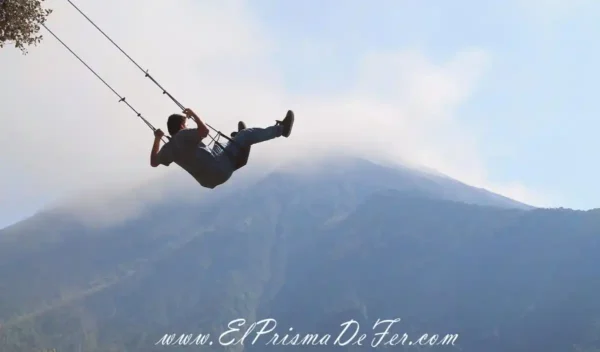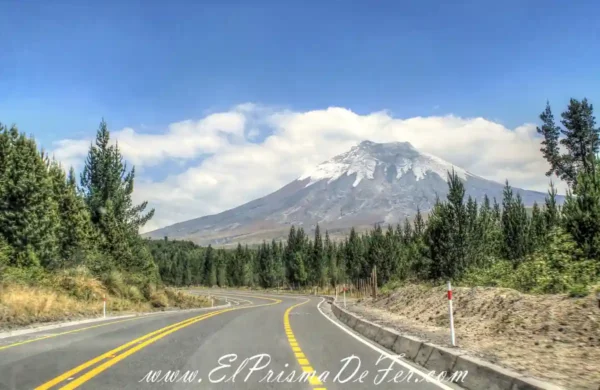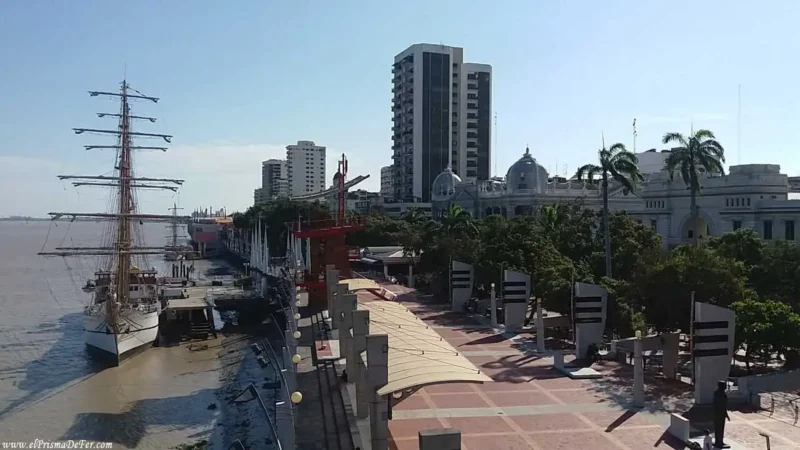Visiting Lake Quilotoa was one of those experiences that will remain etched in your memory forever. This volcanic crater, located in the Andes Mountains at over 3,900 meters above sea level, offers a unique landscape: a turquoise lagoon surrounded by mountains that look like something out of a postcard. No matter how many photos you've seen before, when you see it in front of your eyes, the impression is completely different.
Furthermore, this natural wonder is also accessible: you can easily get there on your own and without spending too much. All this makes Quilotoa a must-see for those traveling through Ecuador in search of unique landscapes and unforgettable experiences.


Table of Contents
Where is the Quilotoa Lagoon?
The Quilotoa Lagoon is located in the central highlands of Ecuador, within the Cotopaxi province, about 56 km west of Latacunga. It is a volcanic caldera formed after the eruption of the Quilotoa volcano more than 800 years ago, and today its crater houses a lagoon of an impressive emerald green color.
The main access is via the route that connects Latacunga with the towns in the area, such as Zumbahua, Chugchilán, and Quilotoa itself. The lagoon is located at more than 3,900 meters above sea level, giving it a cold and windy climate year-round and spectacular views of the Andes.
Its location, relatively close to major cities such as Quito and Latacunga, makes it an accessible destination for day trips or for those who want to stay and explore the region more calmly.
What does the word “Quilotoa” mean?
The name Quilotoa comes from the Kichwa language, the indigenous language spoken in much of the Ecuadorian Andes. It is believed that “Quilotoa” means “interior lagoon” or “water crater”, making direct reference to the volcanic caldera that houses the famous lagoon.
This name reflects the local communities' relationship with the natural environment and their geological history. Beyond its literal meaning, Quilotoa represents a place full of mystery and beauty, where nature and indigenous culture meet, becoming an emblematic symbol of the Ecuadorian Andes region.

You might be interested in knowing what my 2-week Ecuador travel itinerary was.
How the Lagoon was formed
Quilotoa Lagoon was formed by a volcanic eruption more than 800 years ago, creating an impressive caldera now covered by water. Over time, the minerals dissolved in its depths gave it its characteristic emerald-green hue, mesmerizing to all who behold it.
How to get to La Laguna from Ecuador's main cities
From Latacunga
The most common way to get to Lake Quilotoa is from Latacunga, which is approximately 56 km away. From the Latacunga bus terminal, minibuses and local buses leave almost every hour for Quilotoa. The trip takes around two hours, with stops in towns along the way. To make the most of your visit, it's best to leave early in the morning.
From Quito
From the Ecuadorian capital, you can take an interprovincial bus to Latacunga (approximately 2 to 3 hours of travel) and then continue on a local bus to Quilotoa. There are also private or collective tours that connect Quito directly to the lagoon, although they are less frequent and tend to be more expensive.
From Riobamba or Ambato
Another option is to leave from Riobamba or Ambato, taking a bus to Latacunga and then connecting with a local bus to the lagoon. Although the route is longer, it's ideal if you're traveling through the central region of the Ecuadorian Andes.

Latacunga, base city for visiting Quilotoa
Latacunga, due to its proximity to Quilotoa and other attractions in the region, is often the most practical base for organizing excursions. It's not a city I've loved: I found it a bit chaotic, with somewhat messy streets and a lack of cleanliness. However, it serves its purpose well for those looking for a strategic location to sleep, eat, and catch buses to the main destinations in the area.
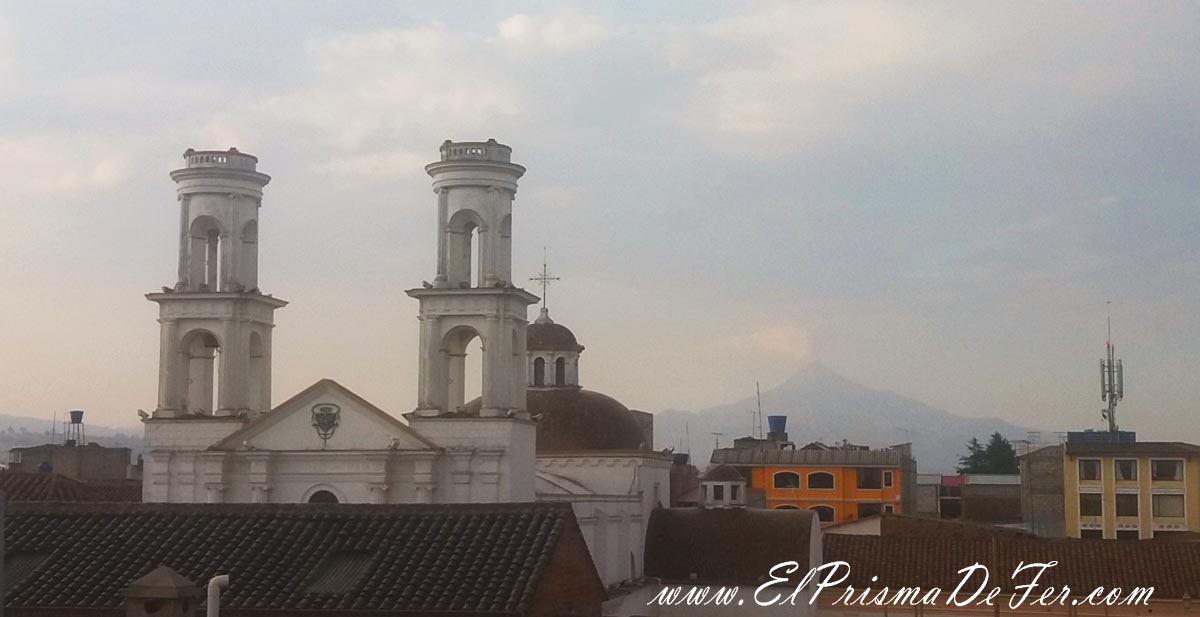
My highlight of my time in Latacunga was the accommodation. I stayed at the Hostal Café Tiana, and although the rooms are simple, the building has a lovely colonial feel, with a patio, terrace, and cafeteria that give it a special charm.
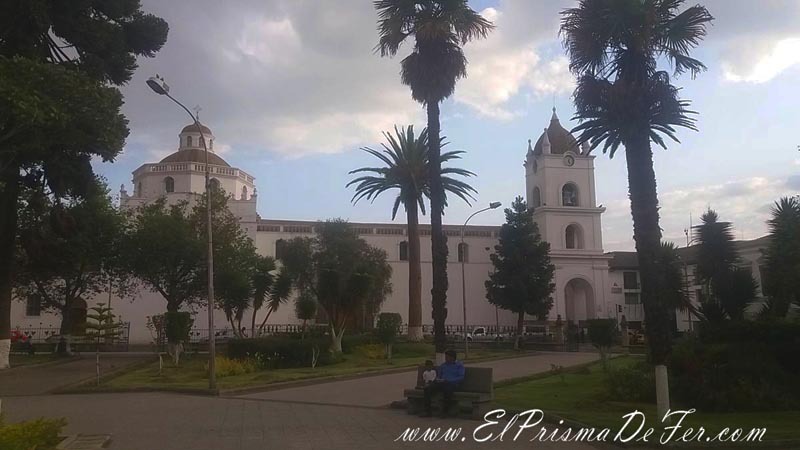
While the city isn't dazzling, this type of accommodation makes for a more enjoyable stay before setting out to discover natural gems like Quilotoa or Cotopaxi.
How to get to Quilotoa Lagoon from Latacunga
To get to the Quilotoa Lagoon, it is best to leave early from the Latacunga bus terminal, where the buses that go directly to the town of Quilotoa depart. While they leave frequently, approximately every hour, it's a good idea to take an early bus, around 9:00 or 10:00 a.m., to explore the lagoon at a leisurely pace without worrying about return journey times.
The journey takes about two hours, as the bus makes several stops in small towns along the way. Passengers are constantly getting on and off the bus along the way, giving the trip a very local feel. Plus, these views of the Ecuadorian countryside set the mood for the unique experience that awaits you at the Quilotoa caldera.
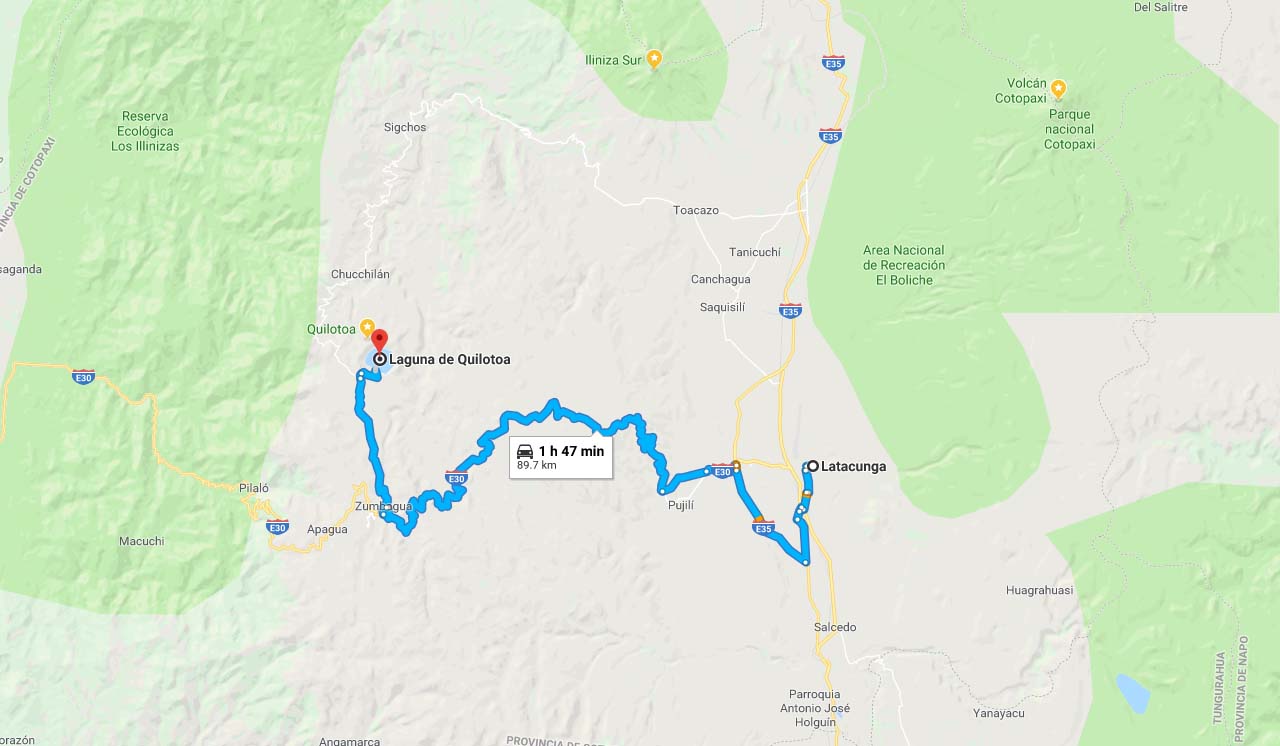

What to do in Quilotoa Lagoon
Upon arriving at the town of Quilotoa, the first thing to do is walk a few meters to the entrance, where an entrance fee of 2 dollars was formerly charged. (Note: According to what I found out, admission became free in 2017 thanks to an agreement with the Ecuadorian Ministry of Tourism, although it's always a good idea to confirm before going.)
Far from being an isolated place in the middle of nowhere, hostels, restaurants and small shops have been set up at the base of the volcano, ready to receive the constant flow of visitors who come to experience this natural wonder.
Once you cross the entrance and take a few more steps, the viewpoints located on the edges of the crater appear. From there, you can take in the full extent of the turquoise lagoon surrounded by the volcano's walls. And believe me, the view is absolutely stunning.
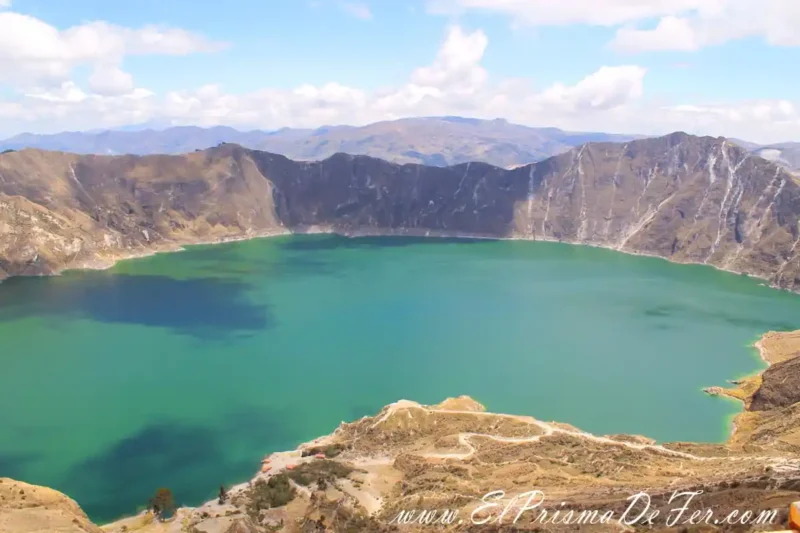
It's very easy to lose track of time simply staring at the lake, its perfect outline outlined by the crater, letting your mind wander and reminding you how tiny we are on this ancient planet. Yes, I know, this place has that power to inspire the imagination.
When we manage to return to reality, other details that had previously gone unnoticed begin to appear. You can make out the path that descends into the volcano, taking you to the very shores of the lagoon.

There's also the path that runs around the entire crater, ideal for those who want to venture around the entire crater. And if you pay attention, you can even see small silhouettes of people kayaking on the water.
Ultimately, Quilotoa isn't just a place to admire from above: there's a range of activities for those who want to explore beyond the initial impression. A complete circumnavigation of the crater takes around 5 hours, and although the trail is said to be marked, since I haven't done it, I can't confirm this firsthand.
Trekking into the Quilotoa crater
To descend to the lagoon there are two options: walking or doing so on mules that can be rented on site. The descent is not usually complicated and can be completed in 1 to 2 hours, depending on each person's pace. The real challenge is on the way back: the climb is steep and requires more effort, and can take between 1 and 3 hours of constant ascent.
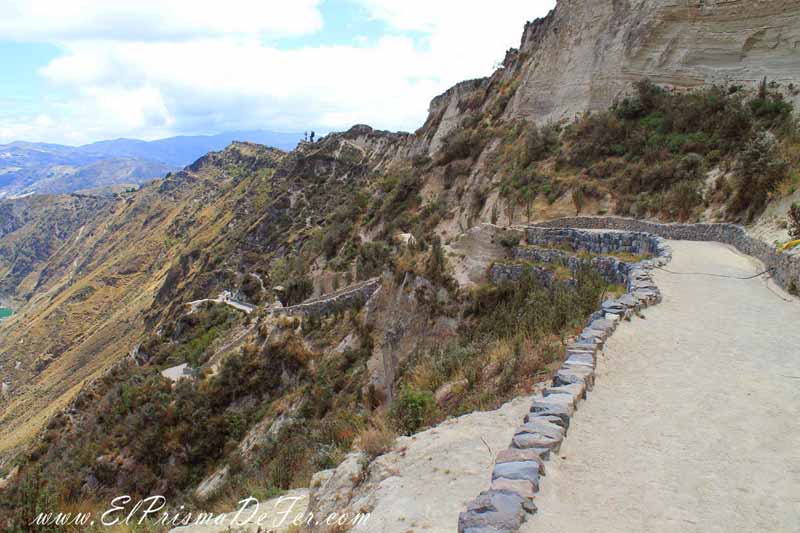
Once inside the crater, the experience changes completely. The water, freezing cold, by the way, is right at your feet, and the sensation is that of being inside a gigantic volcanic pot, surrounded by natural walls that transmit a unique energy.
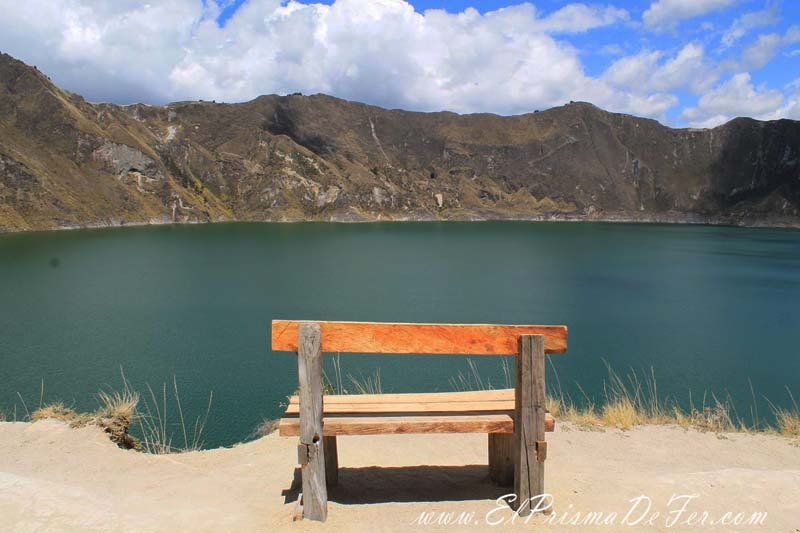
On the shore, you'll find a small kiosk selling drinks and some food (although prices are considerably higher than at the top). There is also a basic hostel for those who want to experience sleeping by the lake. And, as I mentioned before, you can rent kayaks right here to paddle around Quilotoa, or hire mules if you prefer not to face the climb on foot.
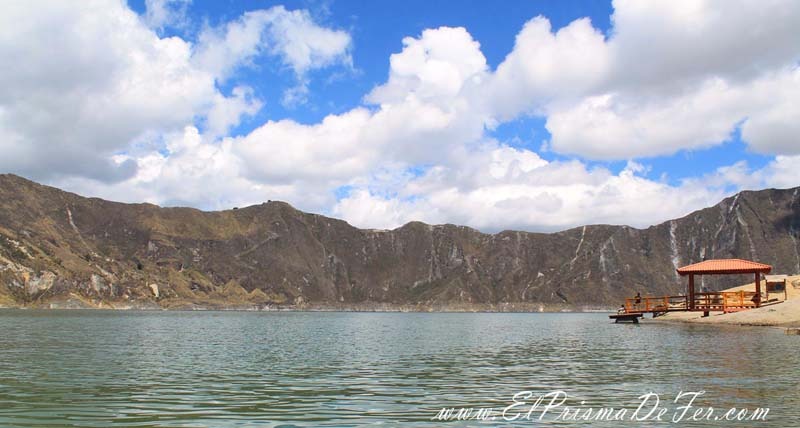
How to get back to Latacunga
To return to Latacunga from Quilotoa, the route is exactly the same but in the opposite direction. Just wait for the bus at the same point where you got off upon arrival, and in approximately two hours, you'll be back at the Latacunga terminal.
An important detail: be sure to check the last bus of the day that passes through Quilotoa. Otherwise, you could end up stranded on the lagoon, and while the setting is beautiful, it's not always the most comfortable option if you hadn't planned for it.

Where to sleep in Quilotoa
The communities of Quilotoa, Zumbahua, Tigua, Shalalá, Chugchilán, Itupungo and Guayama San Pedro offer a variety of accommodation options designed for all types of travelers. You can find everything from more traditional inns and hotels to rustic cabins, budget hostels and family-run inns.
Each place has its own charm: some maintain a more colonial or local style, while others offer modern amenities. Staying in these communities not only makes it easier to visit the lagoon and its surroundings, but also allows you to experience the culture and lifestyle of the area up close, interacting with the locals and enjoying their cuisine and traditions.
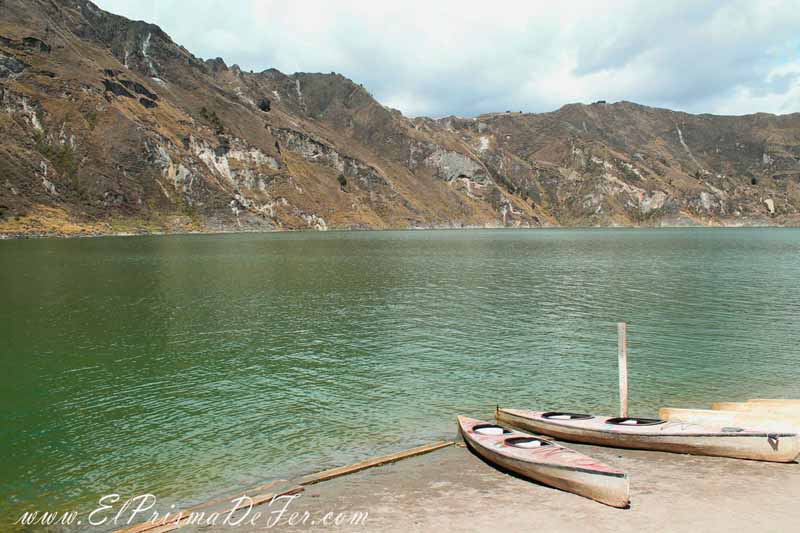
What to bring to visit the Lake
Visiting Lake Quilotoa requires a little preparation due to the altitude and the changeable weather:
- Clothing and footwear: Dress in layers, wear a windbreaker, and wear comfortable walking shoes.
- Sun protection: Cap, sunglasses and sunscreen.
- Hydration and snacks: Enough water and something to snack on; prices inside the crater are high.
- Helpful extras: Camera, cash, and if you plan lake activities, a swimsuit.
This will make your visit more comfortable and safe, leaving you time to enjoy the spectacular scenery.
Final thoughts on the visit to Quilotoa Lagoon
I thoroughly enjoyed the day trip to Lake Quilotoa. In any direction you look, whether descending or ascending, from within or from the edge of the crater, everything feels enormous and impressive. It's like having a small window into the planet's past before you, a unique opportunity to witness Earth's geological history.
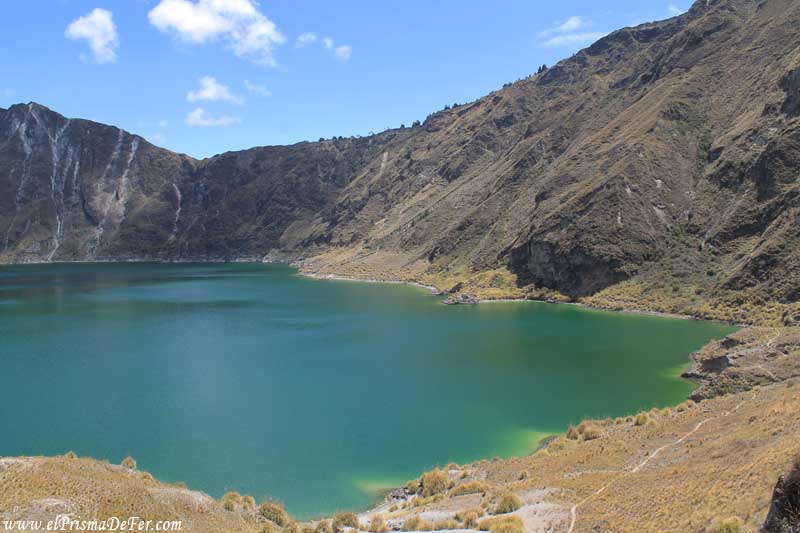
This type of landscape isn't found just anywhere, and that's precisely why I recommend dedicating a full day to it if you're traveling through Ecuador.
Nothing compares to being there in person: photos fail to capture the magnitude, the colors, and the sense of immersion that the place conveys. I insist, you have to experience it for yourself to truly understand what it means to stand in front of Quilotoa.
Support The Prism of Fer!
Your support helps me continue creating free content on the blog. Thank you so much!



